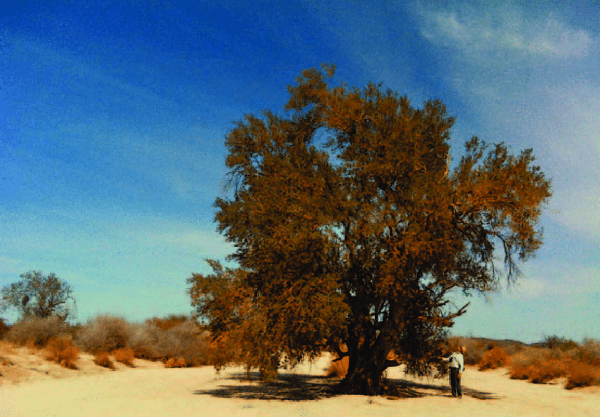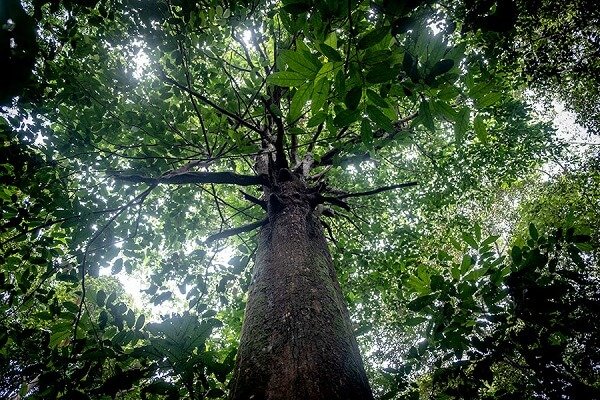Ironwood is a term that is used to refer to a variety of hardwood trees with dense, heavy wood that is extremely durable and resistant to decay. These trees are often found in tropical and subtropical regions, and their wood is prized for its strength and durability.
Ironwood trees are typically slow-growing and can live for hundreds of years. The wood is often used in the construction of buildings, bridges, and other structures, as well as in the manufacture of furniture, cabinetry, and other wood products. It is also used in the production of charcoal and as a fuel wood.
There are many different species of trees that are referred to as ironwood, including:
Olneya tesota
Olneya tesota, also known as the ironwood tree or desert ironwood, is a species of flowering tree that is native to the Sonoran Desert in the southwestern United States and Mexico. It is a member of the Fabaceae family, which also includes legumes such as beans, peas, and lentils.
The tree grows to a height of up to 15 meters and has a wide, spreading crown with thick, dark green leaves. It is known for its hard, dense wood that is used for a variety of purposes, including as a source of timber, for fuel, and in traditional medicine. The tree is also an important food source for many animals, as it produces seeds that are rich in protein and other nutrients. Olneya tesota is adapted to survive in dry, arid conditions, and it is often found in desert and chaparral ecosystems. The tree is also valued for its ability to provide shade and shelter for wildlife.
Ulin Ironwood
Used by Kaltimber but exclusively from disused structure, Eusideroxylon zwageri, also known as Ulin or ironwood, is a species of tree that is native to Indonesia and Malaysia.
It is a member of the family Lauraceae and is known for its hard, dense wood that is used for a variety of purposes, including as a source of timber and in traditional medicine. The wood is often used in the construction of buildings, bridges, and other structures, as well as in the manufacture of furniture, cabinetry, and other wood products.
Eusideroxylon zwageri grows to a height of up to 50 meters and has a straight trunk with a diameter of up to 1.5 meters. It has dark green, glossy leaves and small, white flowers that are fragrant and are pollinated by insects. The tree is commonly found in lowland and hill forests, and it is often used as an ornamental plant in gardens and parks. It is also valued for its ability to provide shade and shelter for wildlife. In traditional medicine, the bark of Eusideroxylon zwageri is used to treat a variety of ailments, including fever, diarrhea, and wounds. The tree is also an important food source for many animals, as it produces seeds that are rich in protein and other nutrients.
Cassia fistula
Cassia fistula, also known as the golden shower tree or the Indian laburnum, is a species of flowering tree native to tropical regions of India, Bangladesh, and Sri Lanka. It is known for its bright yellow flowers, which bloom in large clusters and have a sweet fragrance.
The tree is often grown as an ornamental plant in gardens and parks, and it is also considered sacred in some cultural traditions. The flowers are used in traditional medicine and are believed to have a number of health benefits, including the ability to reduce inflammation and improve digestion. The tree is also known for its long, thin pods, which contain seeds that are used in traditional medicine and as a food source.
Acacia Ironwood
Acacia ironwood trees, which are a group of species within the Acacia genus that are known for their hard, dense wood. Some of the most well-known Acacia ironwood species include Acacia aneura, Acacia goaensis, Acacia karoo, Acacia melanoxylon, and Acacia drepanolobium. These trees are native to various parts of the world, including Africa, Asia, and Australia, and they are used for a variety of purposes, including as a source of timber, for fuel, and in traditional medicine
Carpinus betulus and Carpinus cordata
Carpinus betulus, also known as the European hornbeam or common hornbeam, is native to Europe and parts of Asia. It grows to a height of 20-30 meters and has a straight trunk with a diameter of up to 1 meter. It is known for its hard, dense wood that is often used for woodworking and as a source of fuel.
Carpinus cordata, also known as the heartleaf hornbeam or Japanese hornbeam, is native to Japan and Korea. It grows to a height of 10-15 meters and has a straight trunk with a diameter of up to 30 cm. It is known for its hard, dense wood that is often used for woodworking and as a source of fuel.






